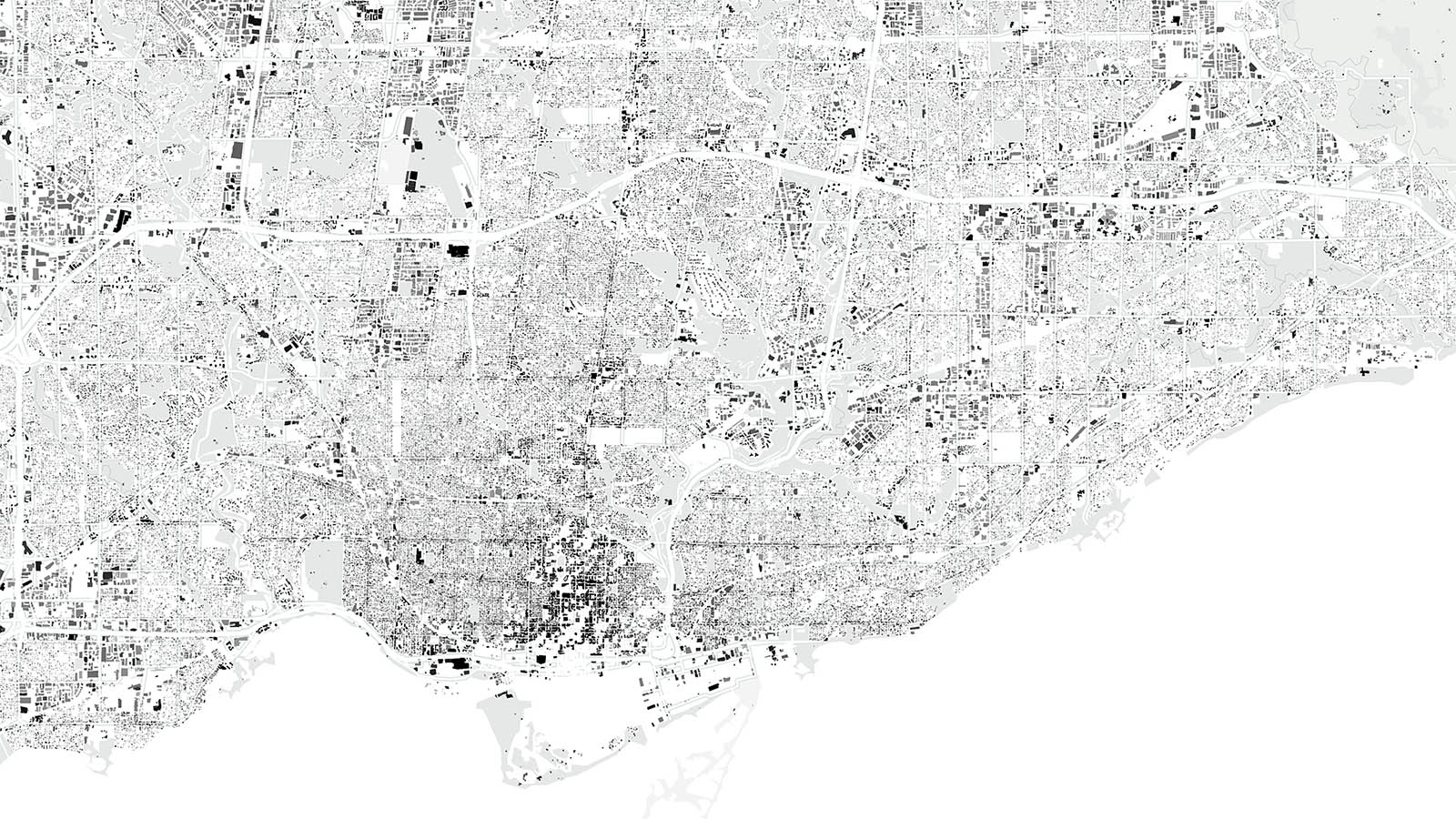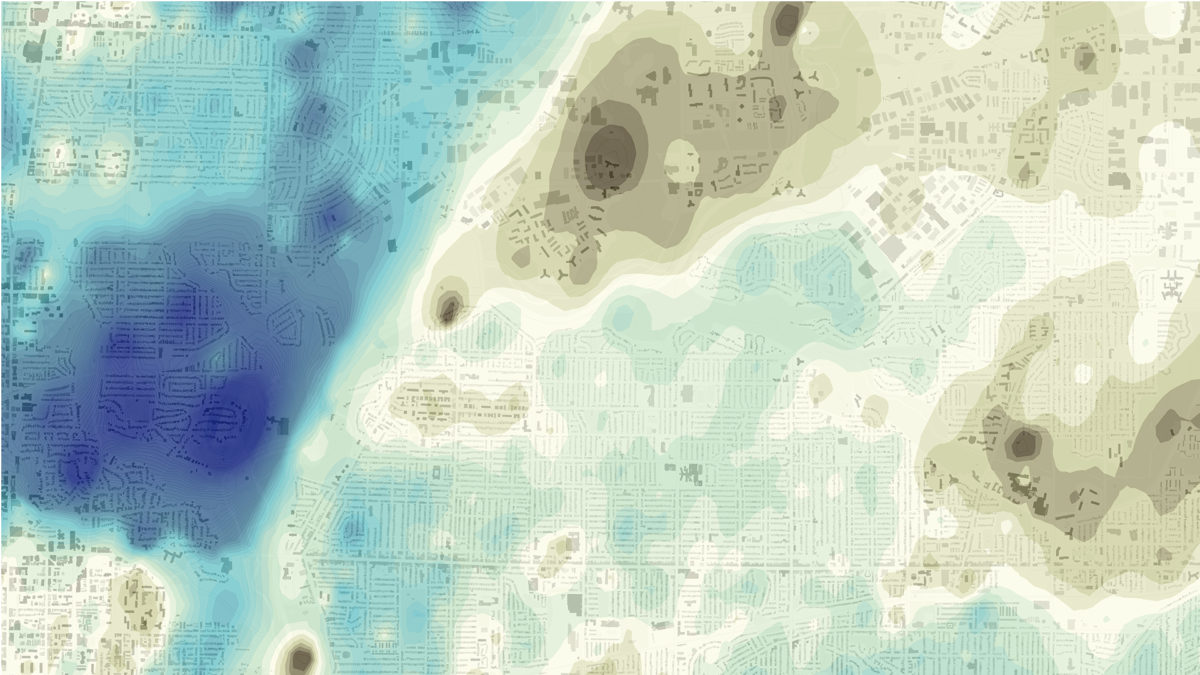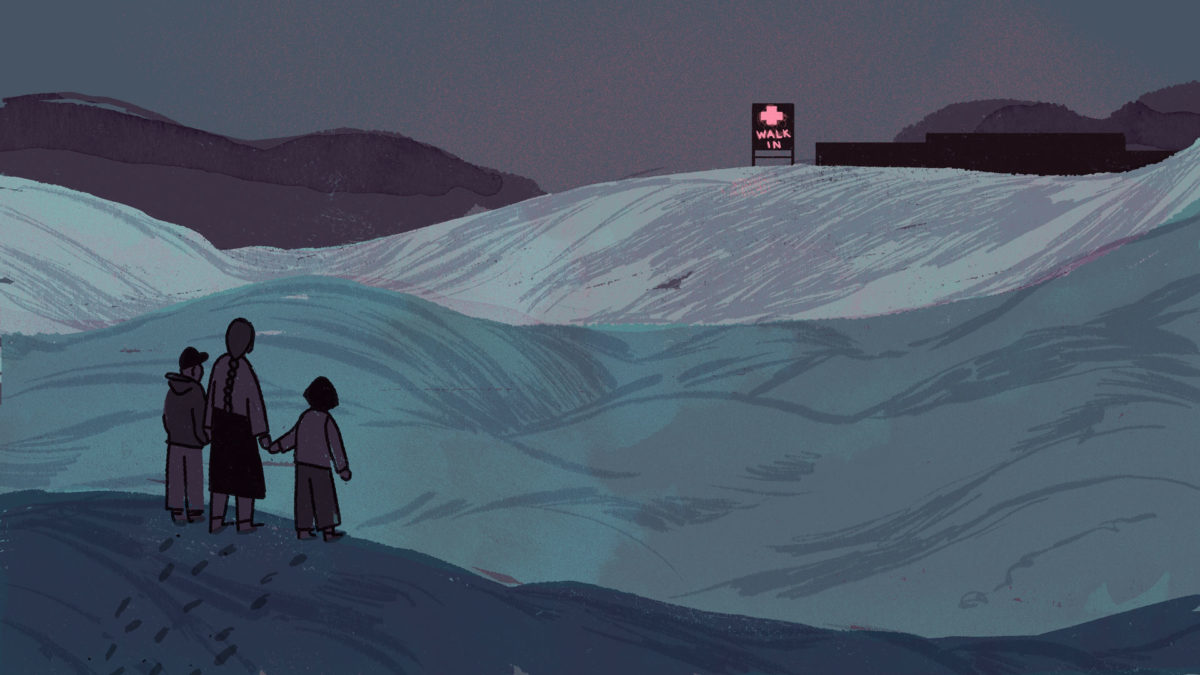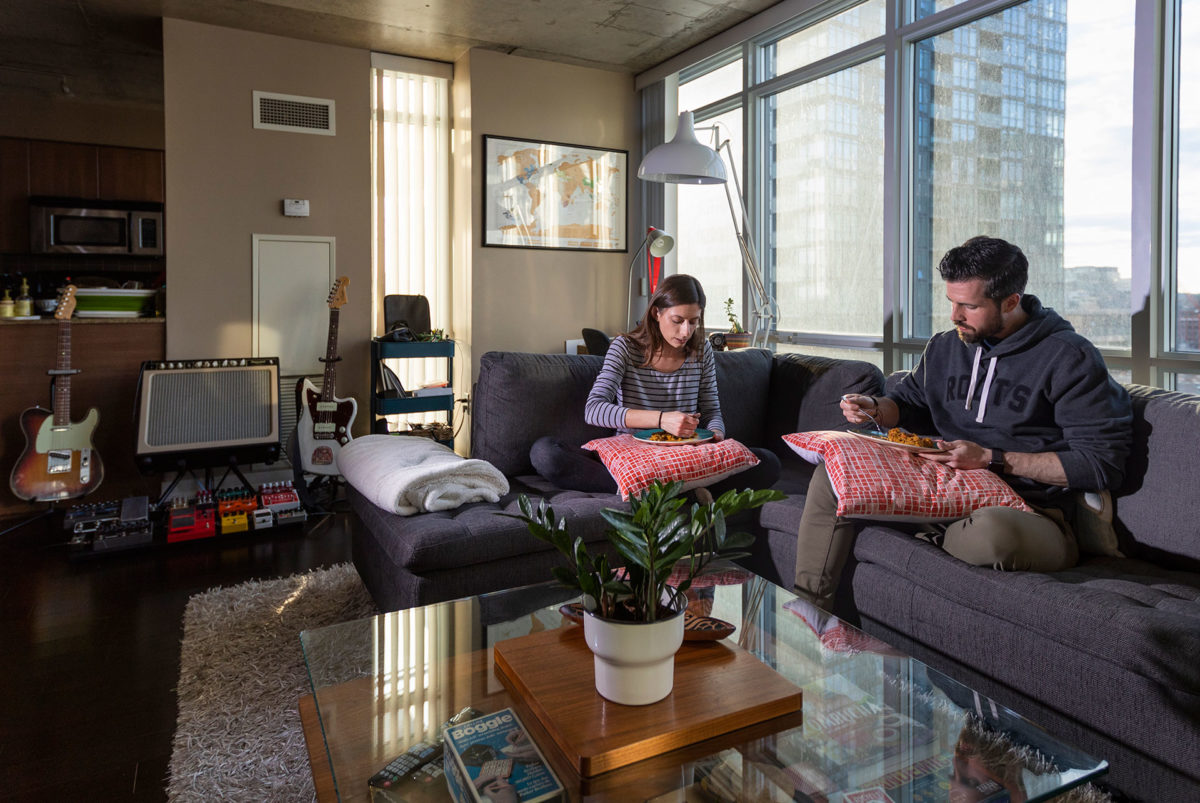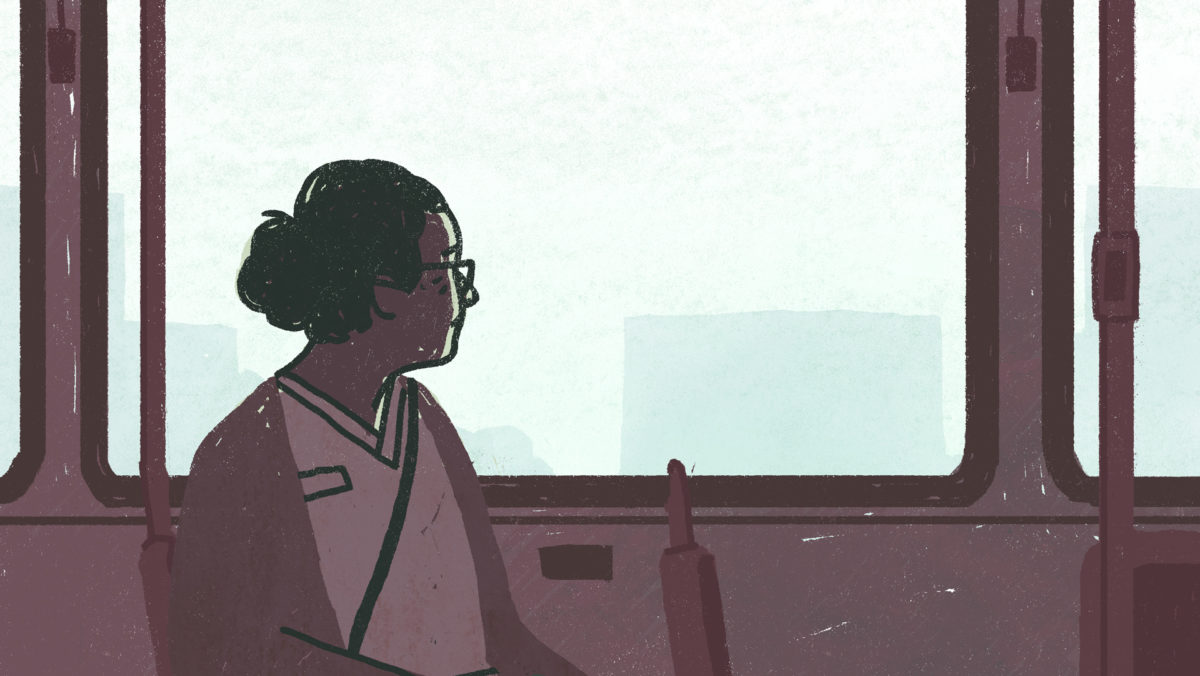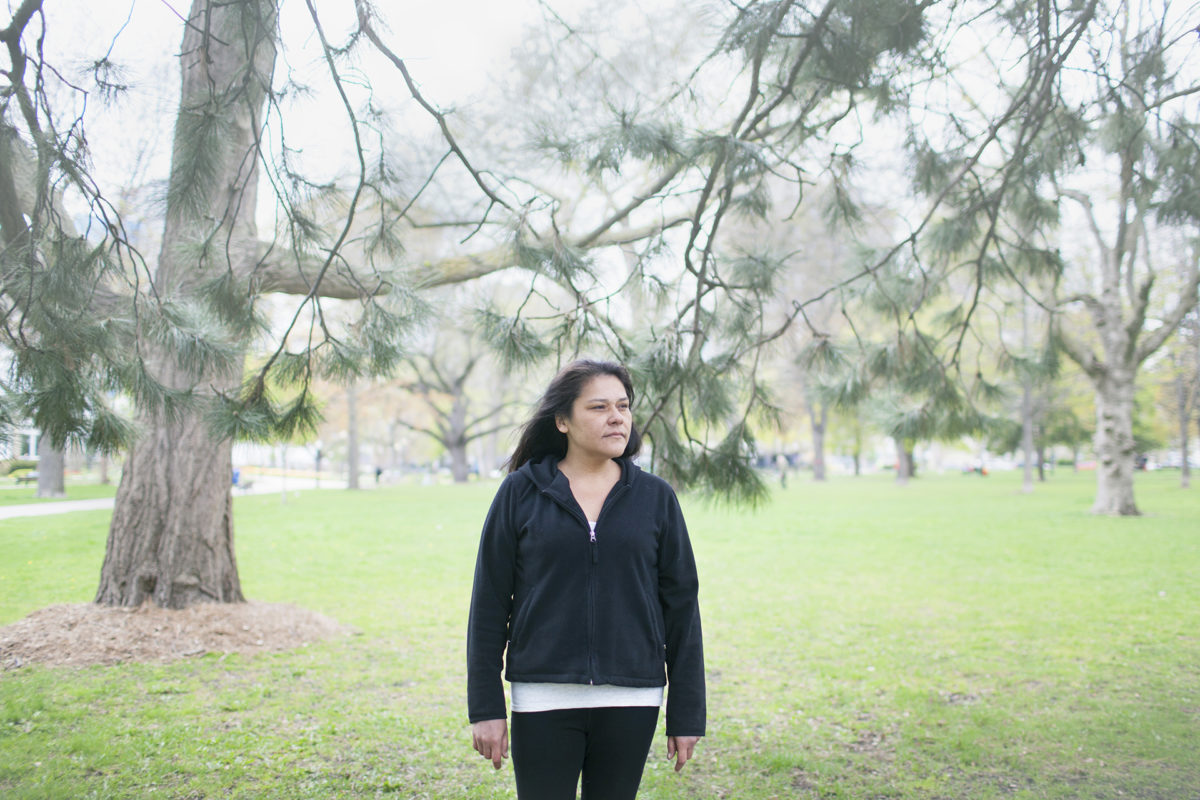
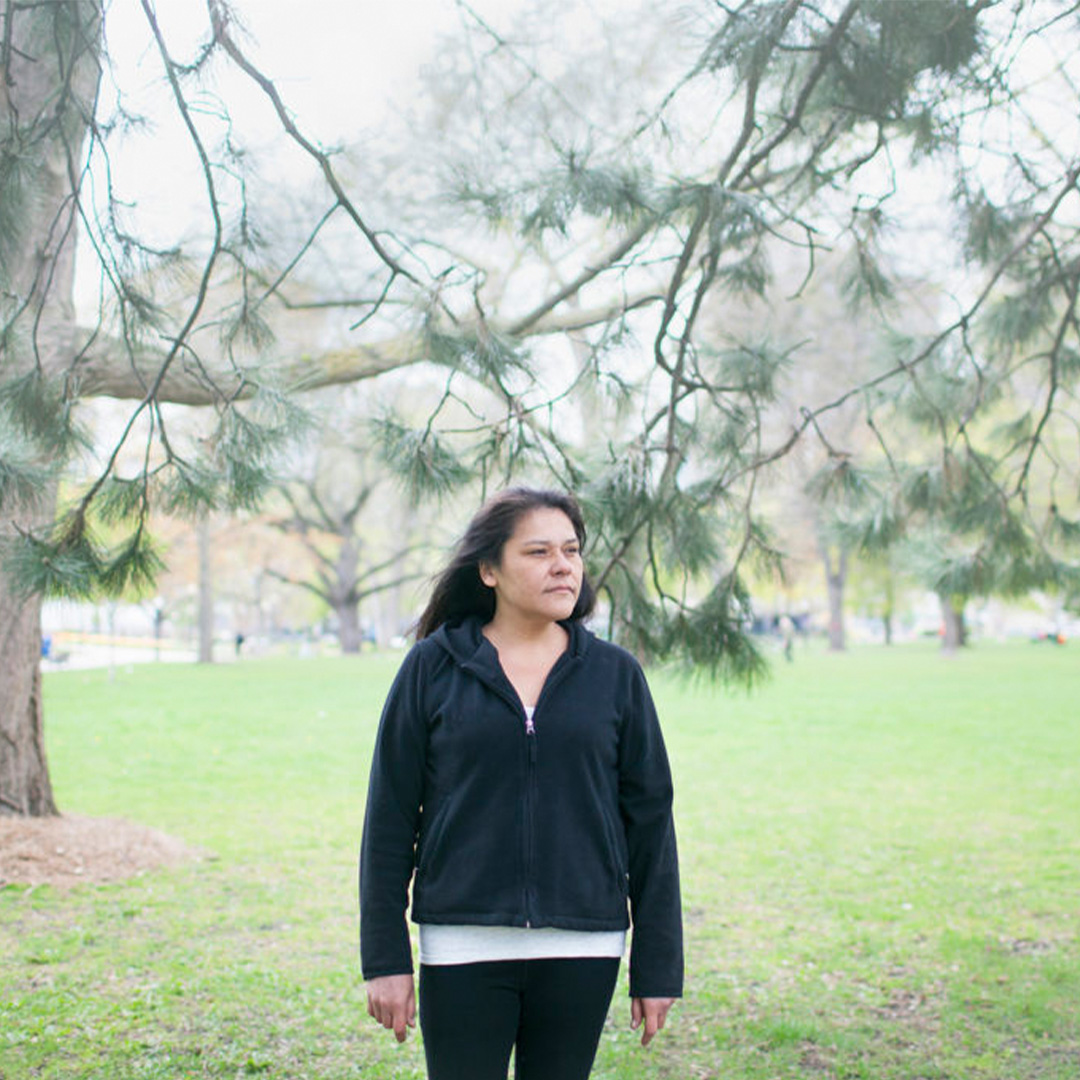
A few years ago, I woke up and the city was just too loud. At the time I was living in Moss Park, the neighbourhood I call home. I went to elementary school here and I’ve used services in the area most of my life. It’s the place I feel most comfortable in the world, the place where people look out for each other and the guy from Sam’s Food Stores asks you how you’re doing. In other parts of the city, people sometimes look right through me. Here, I feel seen.
It’s also an area of Toronto that sees a lot of death. A few years ago, it felt like I was going to a memorial for one of my friends once a month. I would walk down to the corner of Sherbourne and Queen, the same spot guys have been hanging out for twenty years waiting to be picked up for a roofing job or trying to sell weed, and I would get the latest devastating news. People I loved, my chosen family, were dying of overdoses and neglect. Some were dying of violence. One friend, Terra Gardner, was hit by a train. Another, Ramsay Whitefish, was beaten to death on the street.
At a certain point, after so much death, I couldn’t stop crying. It was a kind of depression, but it wasn’t chemical. It was grief piling up on top of grief, one death happening before I’d even had time to process the last.
I woke up one morning and all I could hear were the sirens and the airplanes, the people yelling nonstop. It was deafening. That’s when I knew I had to get out of the city.
I was born in Attawapiskat First Nation in Northern Ontario, the daughter of a survivor of residential schools. I was put into foster care by the time I was seven, and bounced from place to place. In total I went to 14 elementary schools and was a crown ward until I was sixteen. Then I ended up on the street before they moved me to a group home in Kingston.
When I had my own daughter at 18, my biggest fear was that someone from Children’s Aid was going to come for her. We had our own apartment in Kingston, and I remember keeping certain cans of food that I would never touch or eat. They were props, there just to show Children’s Aid that we hadn’t reached whatever level of poverty meant they took your child away.
I began working for a criminal lawyer, filing and typing, while I finished high-school. I moved my daughter back to Toronto and got a good job as a clerk in Federal Court. In many ways, we were living the middle-class dream. We had an apartment in Leslieville and my daughter went to ballet and swimming class. But I was miserable and isolated, cut off from my community. Then, in 2003, I was violently raped in my apartment. Afterwards, everything fell apart.
I left work and gave up my place. I began to smoke crack and quickly realized I couldn’t care for my daughter, so I sent her to live with a friend. It sounds crazy, but I didn’t feel safe in my apartment. The place that I felt safest was on streets. I realize now that I had PTSD.
I became homeless by choice. I slept in stairways and in hospital waiting rooms. Like a lot of homeless people, I stayed up all night and then slept all day at Sanctuary or Church of the Redeemer. I kept out of shelters. They were always full, and I felt like I didn’t deserve one of the spaces. I’d chosen to give up my life and apartment, after all.
Even as I moved from place to place, this neighbourhood was the centre of my life. When the grief of so many deaths became too much, I moved out to Saugeen, a first nation near Owen Sound, to get closer to nature and learn indigenous medicines and ceremonies. After a few years away from the city, though, I decided to come back.
Today, I’m in Moss Park again. I couch-surf, stay in out-of-the-cold programs, or sleep outside in stairwells. Walking around the neighbourhood today, you see the way drugs have changed it. Spend just a single day downtown, moving between drop-in centres, and you’ll be offered fentanyl. The drug dealers that used to sell hash or cocaine are selling it. I don’t know why, but suddenly it feels like it’s everywhere and the overdoses are happening more and more often. It’s not like any other neighbourhood I know.
In the last few years, the neighbourhood has changed in other ways, too. Young couples with double incomes are moving here, renovating the old houses or moving into the new condos, and affordable housing is disappearing.
That’s led to some tension. The other day as I was walking down the street someone yelled at me to get away from their recycling bin, as if I were a criminal. It’s hard to explain, but these days I’ll often get the feeling of being unwanted in my own neighbourhood. You catch a look that says this is my restaurant, this is my Starbucks, this is my neighbourhood.
I have friends who are lawyers and I have friends who live on the street, but it seems like it’s more and more difficult for the haves and have-nots to live in harmony. Today, the haves have a lot and the have-nots have less than ever. The economic gap is growing bigger, and the distance between people feels like it’s growing too. Maybe it’s becoming unbridgeable.
Walking through the neighbourhood these days, I sometimes think about the first time I ever saw Moss Park. I was about ten and my mother took my sister and I down from Attawapiskat by train. We took a cab to a big yellow house on Sherbourne Street, a shelter for women and children that’s now called Robertson House.
The neighbourhood felt like Sesame Street to me. There were kids running around everywhere and all of these grand houses had manicured lawns, which I’d never seen on the reserve. It felt like it belonged to everyone, that someone who just arrived in the city and didn’t have anything could find a home here.
Moss Park doesn’t feel like Sesame Street anymore. But I still think the downtown east side can be a place for everyone—not just the people in the new condos or the homeless people using the services here, but the whole city. That’s what I want for the neighbourhood I call home.
– As told to Nicholas Hune-Brown

